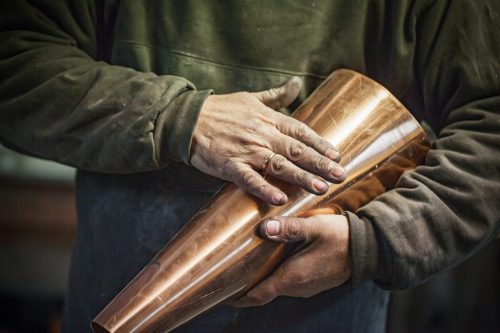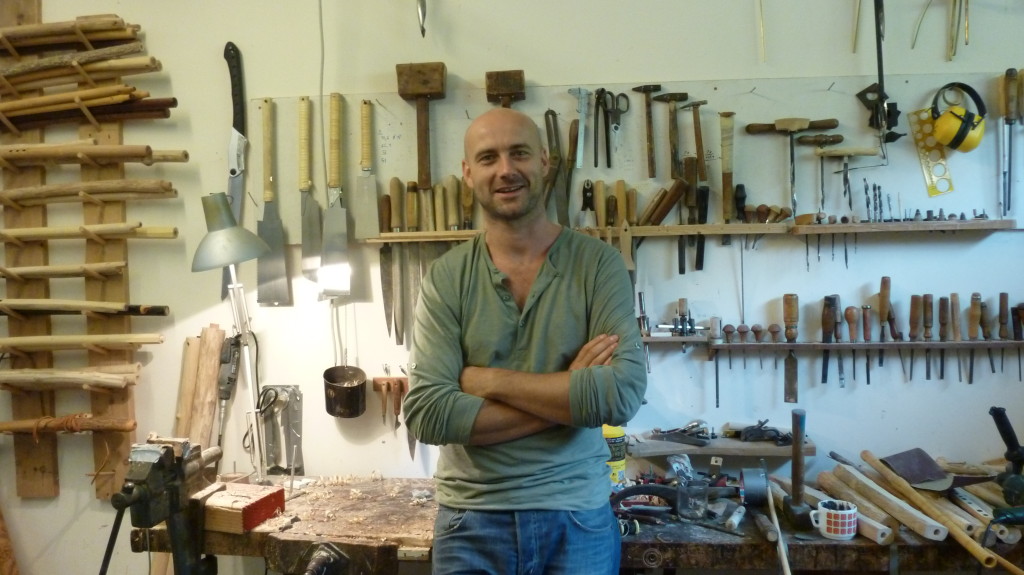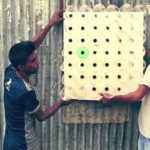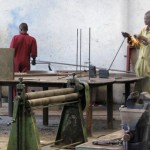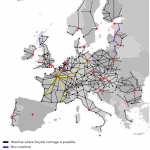- Low-tech at the University. [Kairos] The challenge of low-tech is not to juxtapose harmless « soft » alternatives to industrial technologies, as this would only create a new niche market for « responsible consumers ». It is a question of replacing, as much as possible, the industrial productions by artisanal productions, adapted to the direct environment of their user, selected, understandable, repairable, adaptable and durable.
- Why the past 10 years of American life have been uniquely stupid. [The Atlantic] “The main problem with social media is not that some people post fake or toxic stuff; it’s that fake and outrage-inducing content can now attain a level of reach and influence that was not possible before 2009.”
- Stuck Between Climate Doom and Denial. [The New Atlantis] The incredibly fascinating, important, and nuanced issue of climate change has become an online team sport between the good guys (your side) and the bad guys (the other side).
- The Unabomber and the origins of anti-tech radicalism. [Journal of Political Ideologies]. “As today’s most infamous anti-tech radical, and as the one with the most detailed blueprint for a revolution, Kaczynski may well become the ‘Marx’ of anti-tech.”
- The Degrowth conundrum. [Resilience] “Only when the right ideas and values become predominant can structural change towards simpler lifestyles and systems take place. These conditions show the fundamental mistake built into the standard socialist assumption that the good society must have highly centralised state control. And it shows that the standard socialist strategy of taking control of the state is also fundamentally mistaken.”
- Ecological Civilisation: Beyond Consumerism and the Growth Economy – Free Course. “This video series will be grappling with the problems of consumerism and the growth economy; envisioning alternative, post-carbon ways of life; and considering what action can be taken, both personally and politically, to help build an ecological civilisation.”
- Why we need the apocalypse. [Unherd] In modern terms, “apocalypse” has come to mean “the cataclysmic end of everything”. But this is a long way from the ancient Greek understanding: to uncover, to disclose or lay bare. From this perspective, apocalypse isn’t the end of the world. Or at least, not just the end of the world. Rather, it’s the end of a worldview: discoveries that mean a previous way of looking at things is no longer tenable.
- Monbiotic Man. [The Land] “Simon Fairlie assesses the farm-free future for humanity spelled out in George Monbiot’s latest book ‘Regenesis’.”
- Beyond rescue ecomodernism: the case for agrarian localism restated. [Small farm future] “Given the present world historical moment of profound crisis that the modernist myth of progress has generated and cannot tackle, it surprises me how powerfully it still animates almost all mainstream responses to the crisis.”
- Should we be trying to create a circular urine economy? [Ars technica] “Urine diversion could solve a lot of the environmental problems that plague overwhelmed wastewater treatment systems, but it’s a whole different way of thinking.”
- How To Deflate An SUV Tyre. [Tyre Extinguishers]. “Because governments and politicians have failed to protect us from this danger, we must protect ourselves.”
- Useless Car.
- Silicon Valley’s Push Into Transportation Has Been a Miserable Failure. [Gizmodo] The titans of tech brought plenty of disruption to our broken transportation system but delivered little in the way of innovation.
- The global warming reduction potential of night trains. [Back on Track] “Back-on-Track, a European network of night train initiatives, has examined air passenger numbers in the EU in 2019 to see which air connections could be replaced by night train connections.”
- The attack on rail. [Compact Magazine]. “Disorder, war, and general chaos have conspired to prevent what ought to have been the global triumph of the railway.”
- Chronotrains. This map shows you how far you can travel from each station in Europe in less than 5 hours.
- Orbis. ORBIS allows us to express Roman communication costs in terms of both time and expense. By simulating movement along the principal routes of the Roman road network, the main navigable rivers, and hundreds of sea routes in the Mediterranean, Black Sea and coastal Atlantic, this interactive model reconstructs the duration and financial cost of travel in antiquity.
- Fuck Off Google.
- After self-hosting my email for twenty-three years I have thrown in the towel. The oligopoly has won. [Carlos Fenollosa]
- FreedomBox. FreedomBox is a private server for non-experts: it lets you install and configure server applications with only a few clicks. It runs on cheap hardware of your choice, uses your internet connection and power, and is under your control.
- Old age isn’t a modern phenomenon – many people lived long enough to grow old in the olden days, too. [The Conversation] It’s incorrect to view long lives as a remarkable and unique characteristic of the “modern” era.
- The Healing Power of “Bello”. [Craftsmanship Quarterly] How an intentional community in Italy uses craftsmanship—and a sense of family—to holistically rehabilitate people who are suffering from drug addiction.
- The making and knowing project. “The Making and Knowing Project is a research and pedagogical initiative in the Center for Science and Society at Columbia University that explores the intersections between artistic making and scientific knowing. Today these realms are regarded as separate, yet in the earliest phases of the Scientific Revolution, nature was investigated primarily by skilled artisans by means of continuous and methodical experimentation in the making of objects – the time when “making” was “knowing.””
Craftsmanship in Greece Today
For centuries craftsmanship, the predecessor of industry, has shaped culture and everyday life. Crafted products show region-specific, social, political and economic conditions as well as cultural and religious characteristics. During several trips cultural worker and artist curator Laura Bernhardt, and photographer Benjamin Tafel have undertaken a search for traces of the still active craft workshops in Greece.
In dialogue with a selection of protagonists the project examines their situation, their emotional relationship with their profession and their prospects. The result is a series of portraits that show the artisan in relation to his or her profession and the current situation of upheaval. How important is the traditional value that is passed on from generation to generation, from hand to hand? How is the artisan connected to his or her profession in these times of crisis?
The authors are less interested in a nostalgic view but rather focus on the rediscovery of crafted products, their appreciation and the artisans’ emotional relationship to their profession. What is the meaning of low-tech in times of economic crisis and how can small businesses survive with few orders? The different views of the artisans’ stories created a portrait of an era that can point to the past as well as to the future.
Read more: From Hand to Hand: Stories about Craftsmanship in Greece Today. Via DAMN. Thanks to Sara Dandois.
21st Century Craftsmen: Winne Clement, Flutemaker
The fujara is a long 3-holed fipple flute played in standing position with the flute held close to the body. It’s played using the natural harmonics system, which means the different tones are played by controlling the strength of inblown air. Using only three holes, the diatonic major scale can be reached playing two and a half octaves. Due to the natural harmonics the tuning will always be a compromise, but Belgian flutemaker and musician Winne Clement puts a great deal of effort in tuning and balancing the tones, in such a way that playing together with Western tuned instruments is possible.
All his flutes are made of harvested branches of local inland wood such as ash, elder, maple, hazle, etc. The wood is carefully chosen and cut in winter time – with respect for the environment, not damaging the donating trees – and put to dry for a long period of time. When making the flute the wood is never split in half to hollow it out, but hand-drilled with special old forged drills, leaving the main structure of the wood intact, benefiting the sound, and following the natural curves of the wood. No Tech Magazine visits Winne Clement in his studio in Ghent, where he explains us his tools and methods. [Read more…]
Mechanical 3D Printer
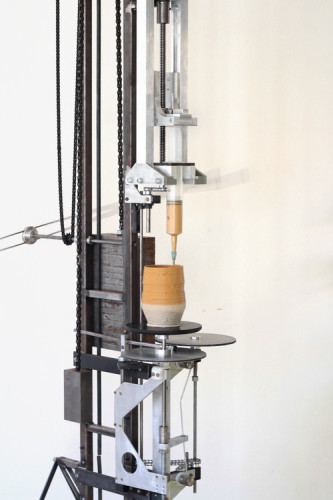 “3D printing allows me to create products more swiftly and more efficiently than ever. But these products don’t feel mine. They are merely a product of this new technology. I love technology but how can I reclaim ownership of my work? Perhaps by building the machine that produces the work. Perhaps by physically powering the machine, which I built, that produces the work.”
“3D printing allows me to create products more swiftly and more efficiently than ever. But these products don’t feel mine. They are merely a product of this new technology. I love technology but how can I reclaim ownership of my work? Perhaps by building the machine that produces the work. Perhaps by physically powering the machine, which I built, that produces the work.”
Instead of building a traditional 3D printer, Daniël de Bruin decided to harken back to a past when pantographs and mills ruled the shop floor by making a device which doesn’t require software or electricity to work its magic. His 3D printer is driven by a 7.5 pound weight. “The weight allows me to be connected with the process because there’s no external force involved like electricity; it’s still me that’s making the print,” says de Bruin. “By physically building and powering the machine, the products that come out of it are the result of all the energy that has gone into it.”
For those who complain about the speed of FDM 3D printers, de Bruin says his machine is actually faster. It all comes down to a nozzle diameter of approximately 2mm – rather than the 0.35mm – 0.4mm which is the standard for most 3D printers. While there may be a slight loss in quality with his process, he says his old-school machine can print objects using clay material, pasta, starch bio plastics, and pretty much any material that can fit through the extrusion nozzle, which doesn’t require heat.
See & read more at Daniël de Bruin and 3Dprinterworld. Seen at the Milan Furniture Fair. Related: Human powered 3D-printer.
Japanese Joinery
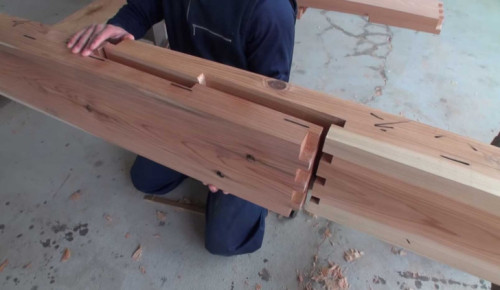 “Japanese carpentry group Kobayashi Kenkou carefully demonstrates the fascinating way in which highly durable buildings are constructed with traditional methods of joining the wood with intricate cuts and interlocking plugs instead of metal nails. The fine planing and perfect fit of each interlocking piece of wood is a testament to the craftsmanship of the carpenters.”
“Japanese carpentry group Kobayashi Kenkou carefully demonstrates the fascinating way in which highly durable buildings are constructed with traditional methods of joining the wood with intricate cuts and interlocking plugs instead of metal nails. The fine planing and perfect fit of each interlocking piece of wood is a testament to the craftsmanship of the carpenters.”
See them in action. Via The Shelter Blog.
Stone Arch Bridges
“Stone arch bridges are amongst the strongest in the world. The technology has stood the test of time. The Romans built stone arch bridges and aqueducts with lime mortar more than twenty centuries ago. Arches and vaults were also the determining structural design element of churches and castles in the Middle Ages. There are stone arch bridges which have survived for hundreds and even thousands of years, and are still as strong today as when they were first constructed.”
“The main reason that western countries moved away from stone arch bridges is because of the high labour costs involved in their construction. In industrialised countries, it is cheaper to use pre-stressed concrete rather than employ a lot of masons and casual labourers. In the economic environment of East Africa and the majority of developing countries, stone arch bridges provide a more affordable and practical option.”
“A larger proportion of locally available resources are used in stone bridges as they can be built with local labour and stones. In contrast, raw materials and machines have to be imported for the construction of concrete bridges and specialized expertise is required. Compared to expensive aggregates, local stones are a strong, affordable material and they are often available in the vicinity (10-15 km) of the construction site. There is no need for expensive steel bars, aggregates, concrete or galvanised pipes that have to be hauled over long distances.”
Stone arch bridges, a strong and cost effective technology for rural roads. A practical manual for local governments, BTC Uganda & Practical Action.
Related:
